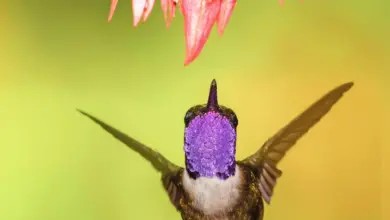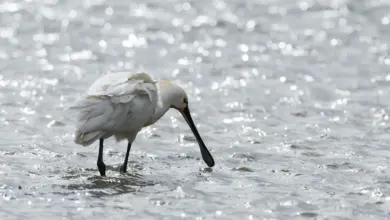White-breasted Wood-Wrens aka Lowland Wood-Wrens
The White-breasted Wood Wrens (Henicorhina leucosticta) – also known as Lowland Wood Wrens – are small songbirds with a natural range that stretches from central Mexico south into South America to northeastern Peru and Surinam. They inhabit humid forests and adjacent second growth up to 6,070 feet (1,850 meters). They are typically seen in pairs or small family groups.
Subspecies and Ranges:
- White-breasted Wood-Wren (Henicorhina leucosticta leucosticta – Cabanis, 1847) – Nominate Form
- Range: Eastern and southern Venezuela, Guyana, Suriname and northern Brazil (south to northern Pará). One record from French Guiana
- White-breasted Wood-Wren (albilateralis) (Henicorhina leucosticta albilateralis – Chapman, 1917)
- Tropical and subtropical northern and northwestern Colombia (lower Cauca Valley, middle Magdalena Valley).
- White-breasted Wood-Wren (eucharis) (Henicorhina leucosticta eucharis – Bangs, 1910)
- Range: Subtropical western Colombia (Valle)
- White-breasted Wood-Wren (inornata) (Henicorhina leucosticta inornata – Hellmayr, 1903)
- Range: Pacific lowlands of southern and western Colombia (south of the San Juan River) and extreme northwestern Ecuador
- White-breasted Wood-Wren (hauxwelli)(Henicorhina leucosticta hauxwelli – Chubb, 1920)
- Tropical southern Colombia (south from Meta and Vaupés) to eastern Ecuador and northeastern and central Peru east of the Andes
- White-breasted Wood-Wren (prostheleuca) (Henicorhina leucosticta prostheleuca – Sclater, PL, 1857)
- Range: Tropical southern and eastern Mexico, from Veracruz and northern Chiapas, east to Belize and western Guatemala
- White-breasted Wood-Wren (decolorata) (Henicorhina leucosticta decolorata – Phillips, AR, 1986)
- Southeastern Mexico – from San Luis Potosí south to northern Veracruz and northern Puebla
- White-breasted Wood-Wren (tropaea) (Henicorhina leucosticta tropaea – Bangs and Peters,JL, 1927)
- Honduras and Nicaragua
- White-breasted Wood-Wren (smithei) (Henicorhina leucosticta smithei – Dickerman, 1973)
- Range: Southern part of the Yucatán Peninsula south to Petén of Guatemala
- White-breasted Wood-Wren (pittieri) (Henicorhina leucosticta pittieri – Cherrie, 1893)
- Range: Southwestern Costa Rica and western Panama (east to the Canal Zone)
- White-breasted Wood-Wren (costaricensis) (Henicorhina leucosticta costaricensis – Dickerman, 1973)
- Range: Northern, eastern and central Costa Rica (Cartago and Limón)
- White-breasted Wood-Wren (alexandri) (Henicorhina leucosticta alexandri – A. R. Phillips, 1986)
- Range: Eastern Panama and immediately adjacent northwestern Colombia.
- White-breasted Wood-Wren (darienensis) (Henicorhina leucosticta darienensis – Hellmayr, 1921)
- Range: Eastern Panama (Darién – Canal Zone) to northwestern Colombia (south to the Baudo Mountains in Chocó)
Description
Size
Length: 4 – 4.8 inches (10 – 12 cm)
Weight (Average): 0.6 oz (16 g)
Plumage Details / Adults
Upper Plumage / Head and Neck: chestnut brown upperparts with a darker crown, pale supercilia (“eye brow”), and black-and-white streaked sides of the head and neck.
Plumage Below: white becoming buff on the lower abdomen
Wings and Tail: barred with black.
Other Physical Details
- Short tail
- Dark bill and feet
Juvenile Description
Young birds have duller upperparts and grey underparts.
Diet / Feeding
White-breasted Wood Wrens feed on insects and other invertebrates.
They forage on the ground or in low vegetation.
Breeding / Nesting
These wrens construct roofed nest on the ground or very low in undergrowth in an area that is concealed by dense vegetation. These birds have been recorded to build “dormitory nests” for individuals or family groups that are usually placed at a higher location – up to 9.8 feet (3 meters) off the ground.
A clutch consists of 2 – 4 eggs that are incubated by the female alone for about two weeks to hatching. The young fledge (leave the nest) when they are about two weeks old.
Calls / Vocalizations / Sounds
Calls: sharp cheek or explosive tuck
Song: cheer oweet oweet cheery weather;
https://www.xeno-canto.org/embed.php?XC=154464&simple=1
Alternate (Global) Names
Chinese: ???? … Czech: Strízlík beloprsý … Danish: Hvidbrystet Skovsmutte … Dutch: Boswinterkoning … German: Waldzaunkönig, Wald-Zaunkönig … Finnish: Valkometsäpeukaloinen … French: Troglodyte à poitrine blanche … Italian: Scricciolo boschereccio pettobianco, Scricciolo di bosco pettobianco … Japanese: munajiromorimisosazai … Norwegian: Hvitbrystskogsmett … Polish: strzyzyk bialopiersny, strzy?yk bia?opier?ny … Portuguese: cambaxirra-de-peito-branco, corruíra-da-mata, Corrutra-da-mata, uirapuru-de-peito-branco … Russian: ?????????? ?????? ????????? … Slovak: oriešok lesný … Spanish: Chivirin pecho bla, Chivirín Pecho Blanco, Chochín Pechiblanco, Chochín-montes pechiblanco, Colchonero de selva pechiblanco, Cucarachero Pechiblanco, Ratona Gallineta, Saltapared-selvatico Pechiblanco, Soterrey de Selva Pechiblanco … Swedish: Vitbröstad skogsgärdsmyg




